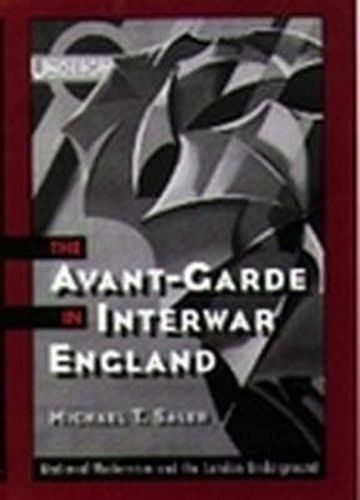Readings Newsletter
Become a Readings Member to make your shopping experience even easier.
Sign in or sign up for free!
You’re not far away from qualifying for FREE standard shipping within Australia
You’ve qualified for FREE standard shipping within Australia
The cart is loading…






The Avant-Garde in Interwar England addresses modernism’s ties to tradition, commerce, nationalism, and spirituality through an analysis of the assimilation of visual modernism in England between 1910 and 1939. During this period, a debate raged across the nation concerning the purpose of art in society. On one side were the aesthetic formalists, led by members of London’s Bloomsbury Group, who thought art was autonomous from everyday life. On the other were England’s so-called medieval modernists, many of them from the provincial North, who maintained that art had direct social functions and moral consequences. As Michael T. Saler demonstrates in this fascinating volume, the heated exchange between these two camps would ultimately set the terms for how modern art was perceived by the British public.Histories of English modernism have usually emphasized the seminal role played by the Bloomsbury Group in introducing, celebrating, and defining modernism, but Saler’s study instead argues that, during the watershed years between the World Wars, modern art was most often understood in the terms laid out by the medieval modernists. As the name implies, these artists and intellectuals closely associated modernism with the art of the Middle Ages, building on the ideas of John Ruskin, William Morris, and other nineteenth-century romantic medievalists. In their view, modernism was a spiritual, national, and economic movement, a new and different artistic sensibility that was destined to revitalize England’s culture as well as its commercial exports when applied to advertising and industrial design.This book, then, concerns the busy intersection of art, trade, and national identity in the early decades of twentieth-century England. Specifically, it explores the life and work of Frank Pick, managing director of the London Underground, whose famous patronage of modern artists, architects, and designers was guided by a desire to unite nineteenth-century arts and crafts with twentieth-century industry and mass culture. As one of the foremost adherents of medieval modernism, Pick converted London’s primary public transportation system into the culminating project of the arts and crafts movement. But how should today’s readers regard Pick’s achievement? What can we say of the legacy of this visionary patron who sought to transform the whole of sprawling London into a post-impressionist work of art? And was medieval modernism itself a movement of pioneers or dreamers? In its bold engagement with such questions, The Avant-Garde in Interwar England will surely appeal to students of modernism, twentieth-century art, the cultural history of England, and urban history.
$9.00 standard shipping within Australia
FREE standard shipping within Australia for orders over $100.00
Express & International shipping calculated at checkout
The Avant-Garde in Interwar England addresses modernism’s ties to tradition, commerce, nationalism, and spirituality through an analysis of the assimilation of visual modernism in England between 1910 and 1939. During this period, a debate raged across the nation concerning the purpose of art in society. On one side were the aesthetic formalists, led by members of London’s Bloomsbury Group, who thought art was autonomous from everyday life. On the other were England’s so-called medieval modernists, many of them from the provincial North, who maintained that art had direct social functions and moral consequences. As Michael T. Saler demonstrates in this fascinating volume, the heated exchange between these two camps would ultimately set the terms for how modern art was perceived by the British public.Histories of English modernism have usually emphasized the seminal role played by the Bloomsbury Group in introducing, celebrating, and defining modernism, but Saler’s study instead argues that, during the watershed years between the World Wars, modern art was most often understood in the terms laid out by the medieval modernists. As the name implies, these artists and intellectuals closely associated modernism with the art of the Middle Ages, building on the ideas of John Ruskin, William Morris, and other nineteenth-century romantic medievalists. In their view, modernism was a spiritual, national, and economic movement, a new and different artistic sensibility that was destined to revitalize England’s culture as well as its commercial exports when applied to advertising and industrial design.This book, then, concerns the busy intersection of art, trade, and national identity in the early decades of twentieth-century England. Specifically, it explores the life and work of Frank Pick, managing director of the London Underground, whose famous patronage of modern artists, architects, and designers was guided by a desire to unite nineteenth-century arts and crafts with twentieth-century industry and mass culture. As one of the foremost adherents of medieval modernism, Pick converted London’s primary public transportation system into the culminating project of the arts and crafts movement. But how should today’s readers regard Pick’s achievement? What can we say of the legacy of this visionary patron who sought to transform the whole of sprawling London into a post-impressionist work of art? And was medieval modernism itself a movement of pioneers or dreamers? In its bold engagement with such questions, The Avant-Garde in Interwar England will surely appeal to students of modernism, twentieth-century art, the cultural history of England, and urban history.